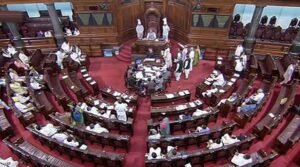Ganga Action Plan
Implementation
Problems of land acquisition, court cases, contractual issues and inadequate capacities in the local bodies/implementing agencies came in the way of speedy implementation. In some cases, essential components of schemes were not foreseen and estimates had to be revised. This caused cost overruns and delays. Some states like Uttar Pradesh and Bihar could not provide funds timely for O&M (Operation & Maintenance) so O&M of conveying sewers and immediate pumping stations has been grossly neglected in Uttar Pradesh therefore in spite of facilities being available, raw sewage still flowing into the river.
Operation and Maintenance (O&M)
The state did not provide proper financial resources, uninterrupted power supply and skilled human resources. The problem in operation and maintenance can be defective land acquisition proceedings. It is a matter of experience that the Indian engineer design the projects on paper but they should design the scheme on the site and should do away with elements of likely disconnect or resistance so far as it is possible.
Technological Issues
Upflow Anaerobic Sludge Blanket (UASB), technology, were adopted which is less energy-intensive but its effluent needs to be polished to meet the prescribed standards before it can be discharged into the river. Treatment facilities at many places were found inadequate due to the phenomenal growth of population and new residential colonies coming up without adequate wastewater treatment infrastructure, resulted in wastewater in excess of treatment capacity of the Sewage Treatment Plants (STPs) discharged into the river without treatment.
Religious Faith
Improved crematoria could not become popular due to peoples religious belief. NRCD (National River Conservation Directorate) and State Government could not popularize its use so the utilization of 29 wood crematoria constructed during 1997 in the towns of Etawah, Muzaffarnagar, Noida, Jaunpur and Sultanpur at a cost of rupees 25 lakh is quite less.
Non-participation of local stakeholders
Narrow participation of local stakeholders in the formation stage for GAP was another major drawback of Gang Action Plan. Without the involvement of local stakeholders, there was a lack chance of success of Gang Action Plan. Lack of coordination between the central, state and the local governments which led to implementation delay.
Limited Scope of Issues Addressed
GAP was concentrated on tackling of sewage only but even if the entire sewage load as envisaged in Ganga Action Plan is treated, water quality could not reach up to the permissible level of bathing. The liquid industrial waste is one of the main pollution sources of the river. Besides these other sources of pollution like nursing homes and other commercial establishments etc. also were not taken into consideration seriously.
Influence of Aid on Choice of Technology
The choice of technology for sewage treatment under the Ganga Action Plan, especially the Upflow Anaerobic Sludge Blanket (UASB) technology introduced with the Dutch development aid which was an important financial source for the GAP-I. The critics argue that while adopting the technology, the MoEF (Ministry Of Environment & Forest) did not carry out any comparative assessment of the sewage treatment technologies on the criteria of suitability or efficiency. Further, they argue that the choice of UASB was highly influenced by Dutch aid and resulted in a mere waste of resources.
Inappropriate Technological Choices for Treatment
The technology adopted under the GAP ( Activated Sludge Processes) was also not suitable in local circumstances as a result it could not give the expected result. For example, in Kanpur, a sewage treatment plant was supposed to have a capacity to treat 130 MLD of sewage could only treat 70 million litres per day due to lack of sludge handling facilities. Some states like Uttar Pradesh and Bihar could not provide proper electricity to these plants.
Inadequacy of Standards of Water Quality
Standards prescribed by the CPCB(Central Pollution Control Board) and M.G.K. Menon Committee is just the opposite because the former is based on the scientific investigation and the latter is fixed arbitrarily. Besides this, there was no clarity regarding the envisioned outcomes which created confusion with respect to the solution of the problem. In the year 1995, when GAP was launched there was a target to acceptable standards while after two years the acceptable standard was changed to Class B water quality i.e, suitable for bathing.
Inappropriate Policy of Discharging Water into the RiverDischarging partially treated sewage or effluents in the river is unacceptable practice unless there is adequate water flow in the river. Entire sewage and effluent should be treated before discharging into the river. The middle stretch of the river becomes dry in the lean season due to diversion of water for industrial and agricultural purposes. It creates a problem in treating polluted water.
Political Motivations behind the GAP
In the beginning, this plan was perceived as highly politically motivated because of Hindu sentiments but very soon they realized that it is a futile effort for their political purpose. Therefore they did not take an interest in this project. At the initial stage, Mr Rajeev Gandhi was very much concerned about this plan but later he did not take interest or successive prime ministers took an interest. It is evidenced by the fact that NRCA (National River Conservation Authority) held only two meetings since the GAP was launched in 1985 while the meetings were supposed to be held annually. This is sufficient to prove that there was a lack of political motivation and interest behind this project. Such a tendency created a barrier for the Ganga Action Plan when the project was on the implementing stage.
Over-Designed STPs
In practice, sufficient amount of sewage could never reach to the Sewage Treatment Plants (STPs), due to inadequacy of the sewer networks and the inadequate interception including diversion of sewage flowing through the nalas. A major portion of Sewage Treatment Plants remained ‘under-loaded’, which resulted in dead-investment on the STPs.
Irregular Maintenance
State government agencies which were responsible for the operation and maintenance of Ganga Action Plan assets, never given due importance in their funding for operation and management of GAP (Ganga Action Plan) assets even after courts interventions also.
Neglect of Monitoring of Important Aspects Other Than the River-Quality
The Government did not take any step towards erosion, tree cover etc. which were also important. Reduced tree cover in the Ganga basin and changed land-use pattern led to an increase in soil erosion. These seriously affected flows of the river. Besides these sediment yield and sediment deposition on the river bed etc. affect river flow.
Failure to Utilize Available Monitoring Data
The data collected hitherto was neither put together cohesively nor analyzed independently. Because of this neglect of data-analysis, lessons could not be drawn for further analysis (Operation & Maintenance) as well as for designing a new initiative to reduce pollution. Thus, this neglect led to not utilizing the lessons effectively learned from past experiences and has raised questions on government spending on monitoring programs.
In coordination with a different mechanism
The multi-tier monitoring system was adopted by the Government of India in which plans were to be monitored at the central and state level but is no coordination between the different agencies and the clarity in terms of roles and responsibilities Ganga Action Plan faced failure.
Little consideration of sewage treatment infrastructure
The lack of a proper sewage infrastructure system also played a role in the failure of GAP. Most of the cities like Kanpur, Varanasi and Allahabad were negligent regarding the management of sewage and did not care which resulted in flowing sewage into the river. It was due to the nonexistence of an underground drainage system. The solid waste management system was virtually non-existed so solid waste found its place in the river.
Slow implementation of the project
The pace of implementation of GAP was quite slow since against 65 STP (Sewage Treatment Plant) under the plan, only 44 could be completed by the end of March 2004. Delays were ranging from 14 to 65 months in the completion of STPs. There was a considerable mismatch between interception and diversion devices provided and sewage treatment plants constructed to contain the pollution load of the river Ganga.
While GAP was still in progress, Central Ganga Authority in February 1991 realised that the completed works under GAP Phase-I would not give desired results unless pollution abatement works in the remaining towns of Ganga and its important tributaries were also immediately taken up. Central Ganga Authority decided in February 1991 to take up Phase-II of GAP subject to the condition of 50 per cent the cost of the schemes would be borne by the concerned state government. There was considerable delay in the completion of schemes due to various local and regional constraints in cost escalation and time overruns. This change in financial planning also created a delay in the implementation of the GAP.
The delays were attributable to problems in land acquisition, court injunctions, increase in the scope of work by the contractors etc. STPs performed below their capacity and thus could not operate at the optimum level of installed capacity; leave alone the achievement of the desired level of norms and standards.
Defective Organizational Set-Up
The organizational set-up of NRCA (National River Conservation Authority) was hierarchically comprised of five tiers system. In which the role of state government was limited to the lowest tier addressing the execution and maintenance of schemes. The state government was also a part of the hierarchy but the central government was reluctant to share its power, therefore the part played by states was minimal. All aspect of designing and program development was done by the NRCA at the central level, state government were assigned.
The task of setting up sewage treatment plants and targets, identifying polluters, and enforcing sanctions violations. The local government were missing from the organizational structure of the NRCA. There was little accountability among state and local government institutions. For example, the local government were not required to establish a revenue base for operation and maintenance. Although the NRCA monopolized all GAP related decision-making, the agencies deputed for implementing the projects were overwhelmed by the scale and scope of their duties.
Ganga Action Plan
Previous Posts
Environmental Impact Assessment in India
Privatization Of Natural Resources: A Critical Threat To Sustainable Development
A Socio-legal study of the rights of traditional forest dwellers
Autism; A Socio-Legal Study On Mental Health Care Laws In India




